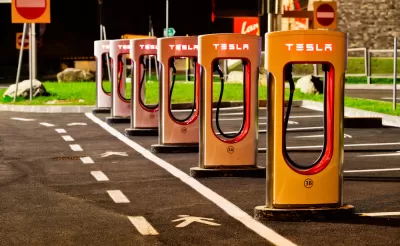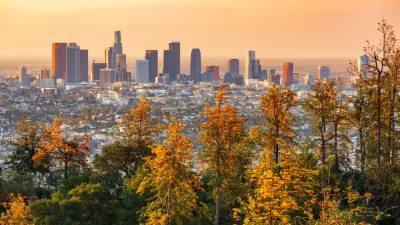A new report shows that long-term federal investments in electric vehicles could promote significant growth in the sector as the nation moves toward reducing GHG emissions.

In a report from the Rhodium Group authored by John Larsen, Ben King, Hannah Kolus, and Emily Wimberger, the authors "assess the energy system and emissions impacts of potential new, long-term federal investments in on-road decarbonization and how investments might interact with potential new vehicle regulations." According to their research, "federal investment in the form of long-term extensions of current tax credits coupled with a build-out of charging infrastructure can catapult electric vehicles (EVs) from 2% of all light-duty vehicle (LDV) sales in 2020 to as high as 52% of all LDV sales in 2031."
With the transportation sector as the leading source of greenhouse gas emissions(representing 31% of the U.S. net total), its decarbonization is a crucial step toward reducing overall GHGs and fighting climate change. "Any action to decarbonize transportation through electrification will require ambitious and sustained effort to accelerate deployment of electric vehicles as quickly as possible." Yet "[u]nlike the electric power sector where a hard pivot from fossil energy to clean energy is entirely doable, it will take decades to replace all of the conventional gasoline and diesel vehicles on the road today with electric models." To get conventional fossil fuel vehicles off American roads, "every vehicle sale matters in the race to electrify and decarbonize transportation." According to the authors, robust investment in U.S. manufacturing and clean transportation at the federal level could "get the nation a few miles further down the long road of decarbonization."
FULL STORY: Pathways to Build Back Better: Investing in Transportation Decarbonization

Study: Maui’s Plan to Convert Vacation Rentals to Long-Term Housing Could Cause Nearly $1 Billion Economic Loss
The plan would reduce visitor accommodation by 25,% resulting in 1,900 jobs lost.

North Texas Transit Leaders Tout Benefits of TOD for Growing Region
At a summit focused on transit-oriented development, policymakers discussed how North Texas’ expanded light rail system can serve as a tool for economic growth.

Using Old Oil and Gas Wells for Green Energy Storage
Penn State researchers have found that repurposing abandoned oil and gas wells for geothermal-assisted compressed-air energy storage can boost efficiency, reduce environmental risks, and support clean energy and job transitions.

Private Donations Propel Early Restoration of Palisades Playground
Los Angeles has secured over $1.3 million in private funding to restore the Pacific Palisades playground months ahead of schedule, creating a modern, accessible space that supports community healing after recent wildfires.

From Blight to Benefit: Early Results From California’s Equitable Cleanup Program
The Equitable Community Revitalization Grant (ECRG) program is reshaping brownfield redevelopment by prioritizing projects in low-income and environmental justice communities, emphasizing equity, transparency, and community benefits.

Planting Relief: Tackling Las Vegas Heat One Tree at a Time
Nevada Plants, a Las Vegas-based nonprofit, is combating the city’s extreme urban heat by giving away trees to residents in underserved neighborhoods, promoting shade, sustainability, and community health.
Urban Design for Planners 1: Software Tools
This six-course series explores essential urban design concepts using open source software and equips planners with the tools they need to participate fully in the urban design process.
Planning for Universal Design
Learn the tools for implementing Universal Design in planning regulations.
Ascent Environmental
Borough of Carlisle
Institute for Housing and Urban Development Studies (IHS)
City of Grandview
Harvard GSD Executive Education
Toledo-Lucas County Plan Commissions
Salt Lake City
NYU Wagner Graduate School of Public Service





























